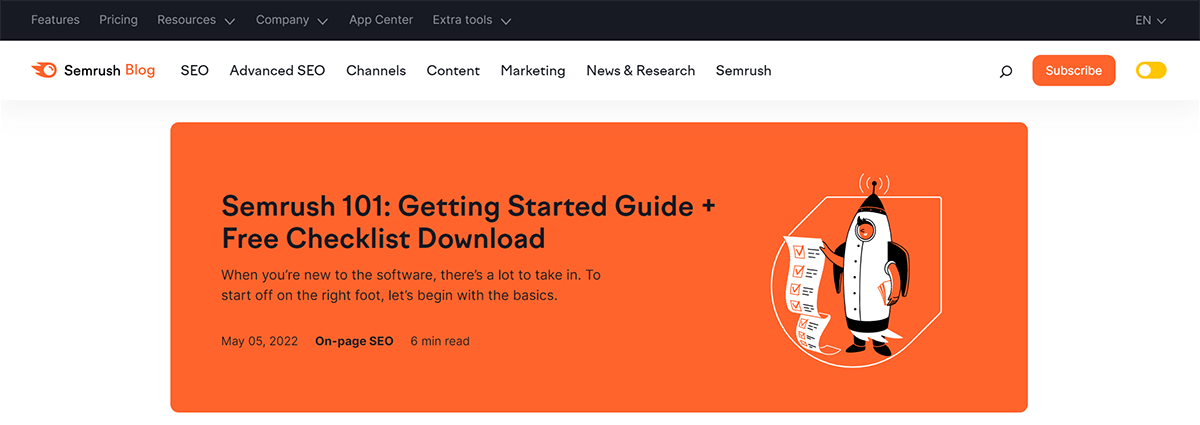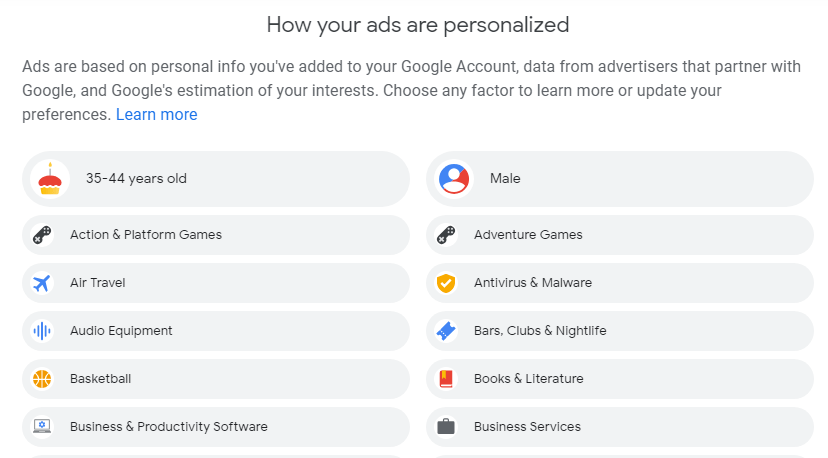If you have a product to sell, you need an audience to sell it to.
And to sell it to your audience, no matter how niche that audience is, you need to know what they like.
Audiences vary. They vary by demographics. They vary in their likes and dislikes, their wants and their needs, their wishes and what they absolutely hate looking at. They vary in how they’ll react to a piece of advertising. They’ll vary in how they’ll react to your product.
There is a market for (almost) every product, and this is something that we stand by.
Knowing what that market is will help you grow your company.
Enter account-based marketing.

What is account-based marketing?
In the early days of internet marketing, a product, no matter how niche, was advertised to everyone, regardless of whether or not your marketing leads would come to fruition.
While there are still companies that take the ‘man in a megaphone at a farmer’s market’ approach to marketing, it’s become increasingly obvious that to reap a significant return on a campaign, you need to target your message to the people who are actually going to want to hear it.
Not as an audience – as actual individuals.
That’s account-based marketing.
Account-based marketing involves the same steps you take for every campaign.
But it goes a step further.
With account-based marketing, your campaign wouldn’t target ‘millennials’ or ‘computer enthusiasts’ or ‘pet owners’, it would target ‘millennials who were 12 when this particular show was airing on television’ or ‘computer enthusiasts who spend their time building virtual apartments’ or ‘pet owners with 3 cats and 2 dogs’.
Account-based marketing is niche. It’s detailed.
It’s rewarding when you get it right.

Account-based marketing done right
It’s hard to be a B2B vendor in today’s environment: there’s so much competition, and so much of it is amplified over social networks. To stand out, and to reach the attention of key decision makers, you really need to go the extra mile.
Like GumGum. GumGum wanted to attract the attention of McDonalds. Cold-calling or sending them an email wouldn’t cut it; they needed to do something big.
They created the #GumGumForThat campaign, where they shipped 100 burger kits to leading executives at McDonalds, turning their burgers into a paper showcase of GumGum’s brands. On social media, they posted and tagged McDonalds on shortform videos that showed their stop-motion burger kits.
They secured the meeting with McDonalds.
Okay, but what does account-based marketing look like?
You’ve definitely seen account-based marketing tactics before – and you’ve used them, unintentionally, for years. Account-based marketing isn’t a new tactic, it’s just an extension of what we already know as people: if you want to make an impression, you have to do something that sticks.
1. Industry-specific blogs
Such as: HubSpot, SEMRush, Switch
What is it?: You have a problem, and this company has the solution to your problem in this blog.
Why does it work?
Industry-specific blogs work on two different fronts: on the one hand, it really showcases your knowledge and experience in the best possible way, especially if you take the time to design and create beautiful-looking content. Blogs, one of the oldest forms of longform writing on the internet, are far from outdated: they’re an immensely useful tool into attracting, retaining, and capitalising on your core audience. You’re reading this, aren’t you?
Think of the last time you wanted to look up a review for something really niche: a fountain-pen, a particular brand of makeup, a 3D printer.
Blogs fill the gap between you and your client with knowledge – free to use and free to read. For most people, who are now becoming increasingly aware of how monetised all of their entertainment is, a blog feels like something too good to be true.
But besides showcasing your knowledge, blogs are a great way to communicate and reach out. If you put out content that shows off what you know, that link will be shared across social media, and you’ll spark discussions – and you don’t have to do a thing except write the blog in the first place.

2. Personalisation
Such as: Google, Microsoft, Asana
What is it? The products you’re using know your name and what you like.
Why does it work?
Personalising your content is one thing. Personalising your entire product is a completely different can of worms, but you don’t need to overhaul it wholesale and create individualised product offerings for every user: you just need to know their names.
The internet has been around for a long time – and for the most part, it has been impersonal, anonymous, and difficult to customise, so when a product comes out that offers you customisability, such as using your name and auto-filling forms for you, the convenience alone is enough to keep some people coming back. This does involve collecting first-party data, but the personal touch pays for itself in the long-run.

3. High social media engagement
Such as: Denny’s on Twitter, Microsoft CEO on LinkedIn, Crocs on TikTok
What is it? If you have something to say, say it with an @.
Why does it work?
Social media is a behemoth, and we’re not exaggerating: according to DataReportal, 58.7% of the total global population is on social media, and that figure keeps growing. For companies, being in the place where they have the most access to their audience makes sense, and for consumers, the fact that brands are on social media makes it easier to air their grievances. Social media is also a public place, the internet equivalent of shouting at someone across the street. For B2B marketers, putting themselves in that public space works.
But it has to be at a high-enough level. It’s not ‘post a picture to social media and hope for the best’.
It’s ‘post a picture to social media, and then tag the people you want to see it’.
do you ever yearn for the soft touch of a pancake
— Denny’s (@DennysDiner) May 12, 2017
4. Geofencing/geotargeting
Such as: GoogleAds, Facebook
What is it? Knowing your customer, but also where they live, work, and study.
Why does it work?
Similar to personalisation above, geofencing and geotargeting work on the idea that your customer is visiting a particular place for a reason, and that ads built along those reasons have a much greater chance for conversion. It builds on current technology to leverage the greatest impact out of geofencing, and for guerrilla marketing, it’s an unmatched opportunity to create a campaign that just keeps going on.

5. Partnership/Collaboration
Such as: Nike/Hello Kitty, LV/Metaverse
What is it? You make a product, another company makes a product, and if you put them together, you have a super product.
Collaborations can really amp up the value of both brands, so if you’ve got connections in other industries, we recommend looking into creating a limited edition product. Not only will it satisfy your own marketing goals, it will also bring in a segment of consumers you might never have known of – and for people, the appeal is obvious. Who doesn’t want a limited edition product made by two disparate companies?

How does account-based marketing work?
For account-based marketing to work, you need to align your sales and marketing goals.
Account-based marketing as a strategy is effective, but only if you take away the divide between sales and marketing departments as a lot of the effectiveness of account-based marketing is determined on how well sales and marketing work in a team.
Sales and marketing need to agree on resources. They need to agree who’s taking on the key responsibilities. They need to have a metric for measuring success.
They need to know who they’re marketing to.
The other half of effective account-based marketing happens with the accounts themselves.
Look at your clients. Who is high-value? Who isn’t? Which accounts can you grow? How can you grow your clientele in a way that matters?
Account-based marketing flips around the normal sales funnel: where first you create awareness for a product, and then go from there until you achieve customer loyalty. Account-based marketing answers a different question: we have the client. Now what?
That sounds like inbound marketing.
One can’t really exist without the other.
Account-based marketing is outward: it’s understanding and hyper-targeting your consumers.
Inbound marketing is how you understand those consumers in the first place.
With account-based marketing, you’re reaching out to the customer to see how you can make their lives easier.
With inbound marketing, you’re creating the connection that will get the customers to turn to you in the first place.
You can have inbound marketing. And you can have account-based marketing.
But they’re far more effective when used together.

So should I stop inbound marketing and use account-based marketing?
Use both.
When you combine the consumer knowledge that you establish through inbound marketing with the hyperpersonalisation of account-based marketing, you create a strategy that is built to put you at the top of your consumer’s recall list.
Think about the last time a company made you feel special: addressed you by name, brought out something tailor-made for you.
A united approach is the best of both worlds.
Our advice? Learn about your customer through inbound marketing. Win the account using account-based marketing.

How do I use account-based marketing?
All of this might sound like a lot.
It isn’t. Account-based marketing takes time and effort, but it’s time and effort that you’re already likely spending somewhere else; this could be a better use of your time.
Here’s how to start:
- Align your sales and your marketing strategies – you need both teams on the same page for account-based marketing to be effective.
- Create personalised personas for who you want to buy from you – knowing your customer is half the difficulty.
- Create a roadmap for how you’re going to engage those personas, what leads you need for a successful connection, and how you can retain those audiences over time.
- Connect with high-level decision makers in your target account.
- Profit!

What do I get out of account-based marketing?
Account-based marketing is a long game.
But you’ll see some results immediately.
Here’s why: at the core of it, account-based marketing is another storytelling tool. All it will give you is a better understanding of who is listening to you, and how you can keep them listening. You can get there in other ways – but the connection that you build with account-based marketing is powerful.
There are other benefits.
- Your sales and marketing team will be working towards a united goal. Any issues that crop up about misalignment can be fixed, easily, by turning back to the account and seeing where you are in your roadmap.
- When you take on a high-value account, you can struggle to retain that high-value account: after all, in this day and age, no product is truly unique. The connection you build through account-based marketing can give you a better idea of what those high-value accounts are looking for, and by building a connection with key decision makers, you might find it easier to retain those accounts. It becomes a personal connection, not strictly business.
- You boost your customer experience. If you already put in so much effort for your consumers, your consumers will notice, and they’ll keep coming back both for the consistency and because you made them feel special – and that’s becoming a lot harder to do nowadays.
- Grow your business. Your consumers like you. You consistently get rave reviews about your customer service. The only place left to go is up. Your business gets more business, and you can then expand.
- Hand in hand with the above, but the most obvious: increased return on investment. The effort to connect with, and retain, high-value accounts will show.

Okay, so who do I need to hire to create a good account-based marketing campaign?
People who understand your brand.
Account-based marketing is all about knowing your brand, knowing the customers your brand attracts, and knowing what those customers want. If you’re going to hire to put together an account-based marketing team, they need to know everything about your brand that you can give them.
Alternatively, you can skill up your team. Look at your sales and marketing staff: who knows the customers the best? Look at your customer service team: is there any information they can give you?
Account-based marketing is a whole-company strategy. Isolating it to just two departments doesn’t work: you need everyone to be on board, everyone to know what’s going on, everyone to be able to pitch in. Your customers are multifaceted and complicated.
You need to understand them. And your team can give you that.

Why are you talking about account-based marketing now?
We talk a lot about B2B marketing but that’s a bit of a misnomer: B2B hasn’t been business-to-business since the rise of social media and the era of brands being able to speak to other brands without needing a formal meeting or a boardroom to facilitate the conversation.
Marketing is changing. The way you talk to your consumers has already changed. And when big changes like this happen, the way that we normally do business starts to struggle.
When business starts to struggle, everyone starts to struggle.
Business isn’t inanimate. You can’t drop a company into a location and expect it to stay afloat without innovation, without help, without looking at what they’re doing and branching out into experimentation and going back to the drawing board if it doesn’t work. Business needs the influx of new techniques and new habits to thrive. Once it stops innovating and trying new things, it struggles, and it collapses.
Account-based marketing is the next logical step in a journey that was always going to lead here: to the place where communication is human and we tell stories to appeal to the humans on the other side.

Account-based marketing all sounds like a lot of work for nothing.
GumGum and T-Mobile
GumGum’s no stranger to landing the high-value account, but their strategy for pitching for T-Mobile was ingenious. After noticing that CEO John Legere was on social media, GumGum built a complete audience profile around Legere’s likes – one of which was comic book superheroes.
Specifically, Batman.
GumGum commissioned and published a custom-made comic book featuring Legere as the superhero, T-Man. Alongside his sidekick Gums, T-Man works to save his city from bad cellphone service and spreads the message about T-Mobile’s superior cell service at the same time.
Legere adored the comic book, and shared it to his Twitter profile.
They won the account.
I love this!! Thank you @GumGum for making this epic comic book about @TMobile. Go #Tman!!! https://t.co/ygzWVS947d pic.twitter.com/wFp8CAiGz1
— John Legere (@JohnLegere) November 29, 2016
Rollworks and the Great Door Opening Kit
Rollworks wanted to make a lasting impression on prospective customers. They started by using display ads, landing pages, and direct mail to make the initial appointments, but the real genius came from following up prospective customers who hadn’t gone past the initial appointment.
So they sent them ‘Door Opener’ kits.
Each prospective customer received a notebook with a checklist guiding the client through the last few steps of what they needed to do to sign onto Rollworks, and also a step-by-step on what benefits they would get through using Rollworks. Each kit was branded for social media, and with good reason: they were shared extensively as consumers showed off their ‘Door Opener’ kits.
Rollworks increased their appointment rate from 2.6% to 10.2%, and prospective consumers were 3x more likely to book an appointment following their kit. Additionally, they elevated their closing rate to 41%.
ABM Case Study 3 + results
Engagio wanted to expand their services, and to do that, they needed a wider client-base and to hit some of their target companies. Instead of relying on cold-calling and emails, they came up with a solution:
Attend Dreamforce, Salesforce’s annual conference, where most of their key decision makers would be spending their weekend.
Take custom-made bobbleheads of each companies’ directors and set up a stall for them to pick up their mini mes.
Most of their targets did absolutely go and pick up their mini-mes, and Engagio walked away with a 31% increase in their sales meetings with their target prospects.
So excited! My very own bobblehead. I am officially an @engagio superhero! thank you @engagio for the customer ? #ABM pic.twitter.com/Tmp29BvnAv
— Kristen Wendel (@kewendel) November 15, 2016
Bonus! Traction Talks by Switch
We had the content. We had the website. What we needed was people to share it with.
Traction Talks was our way of widening our reach among local clients. Meticulously researched, carefully put together, and bringing in speakers from all over to help, our Traction Talks meet-ups were created to pivot towards addressing the people we wanted to work with – and to build connections with the people who could make that happen.
We strategically invited people who we wanted to work with, and even now, 2 years after the last Traction Talks, we just won an account with someone who remembered us from one of the events and came back to us because she felt that we were speaking to her directly back then..
Is there anything I can use to help with account-based marketing?
You don’t have to do this on your own. There are resources to help you if you have the time and the team to undertake it as a project.
- Look into Hubspot’s Strategic Planning template. You can build your own if needed, but this one gives you an idea of how you can get started.
- Strategic planning software like KPIFire can help streamline the process of strategising by plugging your team into one programme.
- Team management app Asana can help you keep track of who is doing what and make sure your team stays on track.
All of these programmes and preparations will take some time to understand, so if you’d prefer to do things the easy way, you can reach out to an agency like ours (if you’ll allow us the shameless plug) and have them do the heavy lifting for you.
Conclusion
Account-based marketing will take time, effort, and planning to get right.
But it’s worth the effort.
And as we get closer and closer to a world where human connection is increasingly the way forward, getting started now makes sense. Everyone could use a better story.
If you need help, we’re happy to help you tell yours.




